ΣΧΟΛΙΟ ΙΣΤΟΛΟΓΙΟΥ : Τα λέιζερ ήδη υπάρχουν σε χρήση, και υπάρχουν κάποιες εξειδικευμένες χρήσεις όπως το ASAT η το LAMS . Η αναζήτηση και η στόχευση του στόχου από τα λέιζερ πραγματοποιείται από ένα πρότυπο IRST η ένα ραντάρ. Η στόχευση περιλαμβάνει την περιστροφή του πυργίσκου προς την πλευρά του στόχου.Κάθε ένα από αυτά τα βήματα διαρκεί μερικές εκατοντάδες χιλιοστά του δευτερολέπτου σε δευτερόλεπτα.Στην
πραγματικότητα χρειάζεται δευτερόλεπτα για να ανιχνεύσει, περίπου ένα
δευτερόλεπτο για να παρακολουθήσει και ΚΑΝΕΝΑ δευτερολέπτο για να
επιτεθεί.Οπότε drones με βλήματα δεν είναι αποτελεσματικά κατά των λέιζερ.Εκτός από τους Αμερικάνους τα έχουν αναπτύξει και οι Ρώσοι.
Η ενέργεια που απορρίπτεται σε χιλιοστά του δευτερολέπτου είναι μονό kilojoules, εκ των οποίων το πολύ εκατοντάδες joules φτάνουν στο στόχο.Το αδύνατο σημείο αυτού ΕΔΩ.
Είναι ότι είναι ένας στόχος 50 κιλών ,με έναν φάρο εγκατεστημένο στην ουρά,γιατί αλλιώς το σύστημα θα είχε εμπλακεί στο κέντρο μάζας. Επίσης ο χρόνος στην εμπλοκή είναι πολύ σημαντικός, η αποτελεσματική εμβέλεια στο μίλι είναι έξι δευτερόλεπτα....η και λιγότερο για να καταρρίψει κανείς τον στόχο.
Όσο πιο μικρός είναι το drones τόσο πιο εύκολο είναι να βγει για ηλεκτρομαγνητικό πόλεμο, όσο μεγαλύτερο τότε γίνεται στόχος από τα SAMs.
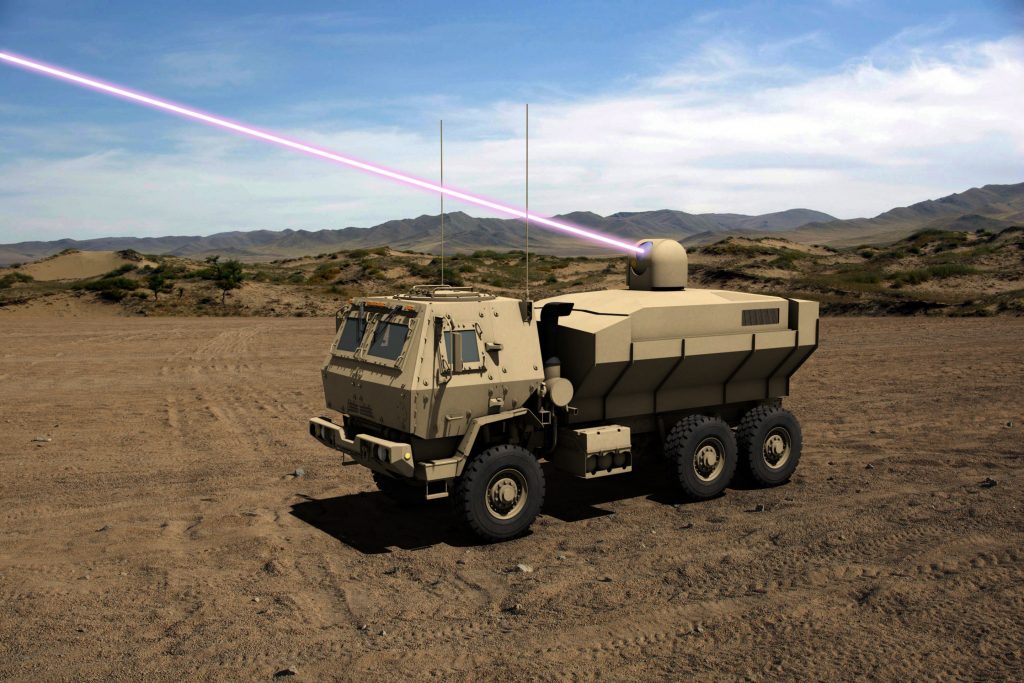
Lockheed is as close to an incumbent as you can get in the rapidly evolving world of high-energy fiber lasers. Raytheon, by contrast, only recently made a big play for laser weapons, investing in a new laser lab in McKinney, Texas, but they can draw on their experience with lower-powered but exquisitely-tuned laser sensors, as well as sophisticated targeting optics.
In this High Energy Laser Tactical Vehicle Demonstrator (HEL-TVD) contest in particular, much of the challenge for Lockheed Martin lies in making their laser weapons smaller while increasing their power. They’re going from the semi-trailer-mounted, 30kW ATHENA testbed, to the massive four-axle HEMTT Army truck used for their current 60 kW laser, to the three-axle FMTV for this 100 kW weapon. (Lockheed’s also developing lasers in the 60-plus kW range for the Navy and Air Force).
For Raytheon, by contrast, the challenge is scaling up to “much
higher power on a larger truck,” as executive Evan Hunt put it. They’re
going to the FMTV platform from their much smaller and lower-powered laser weapons on AH-64 Apache helicopters and Polaris MRZR
dune buggies. Hunt sees their experience with laser sensors and optics
as highly relevant, arguing that a combat laser will spend most of its
time acting as a sensor, only dialing up to its full destructive power
when it spots a target.
Lockheed’s partner — in fact, the prime contractor — is Dynetics,
which brings some deeply specific experience. Dynetics has already
integrated an anti-aircraft missile system, the MML, on the same FMTV truck the laser will go on, and for the same air & missile defense program, IFPC,
for which the laser is ultimately intended. If Dynetics wins, its
missile launcher and laser will serve side by side in composite
batteries. By contrast, Raytheon’s a relative newcomer, but it can draw
on its extensive experience integrating high-tech systems on a wide
range of vehicles from helicopters to dune buggies.
The difference in approaches in a nutshell? It’s a technology called
spectral beam combination, used to merge multiple low-power lasers from
separate fiber optic blocks into a single high-power beam. It’s
basically a spectrum in reverse, combining multiple beams into one
instead of splitting white light into a rainbow of different colors.
(The final beam is actually multiple slightly different wavelengths
superimposed on one another).
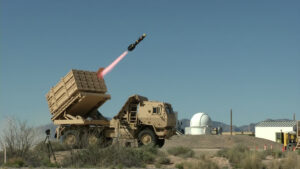
Lockheed touts their expertise in spectral beam combination every
chance they get. “Lockheed Martin, specifically on the laser side, has
14 years experience burning down the technical risks on spectrally beam-combined fiber lasers,” executive Tyler Griffin emphasized when we spoke at the Space & Missile Defense Symposium here.
So, I asked Raytheon’s Hunt over the phone today, do you guys do spectral beam combination too? Sure, he told me, but it’s not that big a deal. “We do spectral beam combination as well, but we consider ourselves laser-agnostic because we are always willing to look at other potential solutions,” he said. “We really are not invested in a single method.”
In fact, Hunt said, spectral beam combination may hit its limits well before lasers reach the megawatt-plus(1,000+ kW) weapons required to kill intercontinental ballistic missiles (ICBMs). He’s also skeptical that fiber optics — the basic building block of modern lasers — will hold up well at such high power levels, which is why Raytheon is researching alternative technologies like planar wave guides that might do better at pouring out the power to kill ICBMs.
The Army’s Plan
For now, though, the Army is looking at softer and more tactical targets. The truck-mounted 100 kW laser will be the high end of a two-tiered defense, Lt. Gen. James Dickinson explained in an interview here, alongside a 50 kW laser on a 8×8 Stryker (currently) or similar armored vehicle (potentially in the future). The lower-powered but more mobile and better protected 50 kW laser Stryker will be part of the Maneuver Short-Range Air Defense (MSHORAD) capability, along with Stryker-mounted missiles, to accompany frontline forces as they move over the battlefield. The more powerful, but less mobile and more vulnerable, 100 kW laser truck will be part of the Indirect Fire Protection Capability (IFPC) to defend “fixed and semi-fixed” locations like command posts, field maintenance units, and supply depots.
The Army’s still working out training and tactics in parallel to the technology, said Dickinson, who as chief of Space & Missile Defense Command (SMDC) has the lead on both these laser programs. He’s also senior mentor to the Army’s high-priority Air & Missile Defense Cross Functional Team, which bring together experts from across the vast bureaucracy to get things done fast.
“One of the most powerful pieces” of this effort, Dickinson said proudly, is that real soldiers have already gotten to fire the experimental systems at real targets. That’s in stark contrast to traditional stovepiped programs, where the requirements officers try to perfect the specs before they give them to the procurement officers. Then the procurement officers try to perfect the system before they give it to the troops. With this approach, instead of running into problems at the end of the process, the troops can start thinking about how to use the lasers long before they’re actually fielded, while the engineers get input from the actual users early enough to make changes.
“Rather than wait until where we’re really where we want to be, at the 50 to 100 (range), before we put it in the hands of the soldiers, we’ve been doing that, we’ve been developing that as we go along… as we mature that capability from 5 kW to 10 kW to 50 kW to 100,” Dickinson told me. “A soldier who gets on the system can say, ‘why is that here? … Here are the issues I have trying to employ this weapons systems. And our engineers are right there with them and they can go, ‘you’re right, maybe we need to relook that.'”
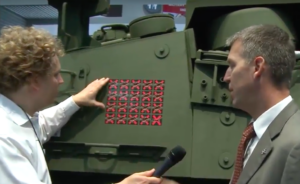
There are other ways the Army is trying to get working systems into
the field faster to cope with the looming Russian and Chinese threats.
Just months after Lockheed delivered
a 60 kW laser on a HEMTT truck, the Army awarded three contracts to
begin design of a more powerful 100 kW laser on the smaller FMTV. After
Preliminary Design Review (PDR), it necked down to Raytheon and the Dynetics-Lockheed team,
each of which got $10 million to finalize its design. The final award
is expected early next year: a $130 million, three-year contract to
build a working demonstrator for testing in 2022.
Can the program move faster? Sure, if the Army funds it.
It’s hard to rush basic science, but the science of high-powered lasers is pretty well in hand, Dynetics VP Ronnie Chronister told me. The remaining challenges are the knotty but mundane ones of making the system more reliable, more robust, and easier to support and maintain in the field, with Army soldiers doing the work instead of PhD-level contractors. “It’s not a science fair project,” Chronister said. “The whole point of this is to field it.”
ΠΗΓΗ
Η ενέργεια που απορρίπτεται σε χιλιοστά του δευτερολέπτου είναι μονό kilojoules, εκ των οποίων το πολύ εκατοντάδες joules φτάνουν στο στόχο.Το αδύνατο σημείο αυτού ΕΔΩ.
Είναι ότι είναι ένας στόχος 50 κιλών ,με έναν φάρο εγκατεστημένο στην ουρά,γιατί αλλιώς το σύστημα θα είχε εμπλακεί στο κέντρο μάζας. Επίσης ο χρόνος στην εμπλοκή είναι πολύ σημαντικός, η αποτελεσματική εμβέλεια στο μίλι είναι έξι δευτερόλεπτα....η και λιγότερο για να καταρρίψει κανείς τον στόχο.
Όσο πιο μικρός είναι το drones τόσο πιο εύκολο είναι να βγει για ηλεκτρομαγνητικό πόλεμο, όσο μεγαλύτερο τότε γίνεται στόχος από τα SAMs.

Lockheed is as close to an incumbent as you get in the rapidly evolving world of high-energy fiber lasers. Raytheon, by contrast, only recently made a big play for laser weapons, but they can draw on their experience with lower-powered but exquisitely tuned laser sensors.
SPACE & MISSILE DFENSE SYMPOSIUM, HUNTSVILLE, ALA.: The US Army has narrowed down to two teams — with very different approaches — who will build a 100 kilowatt laser to shoot down drones, rockets, artillery shells, and mortar rounds.Lockheed is as close to an incumbent as you can get in the rapidly evolving world of high-energy fiber lasers. Raytheon, by contrast, only recently made a big play for laser weapons, investing in a new laser lab in McKinney, Texas, but they can draw on their experience with lower-powered but exquisitely-tuned laser sensors, as well as sophisticated targeting optics.
In this High Energy Laser Tactical Vehicle Demonstrator (HEL-TVD) contest in particular, much of the challenge for Lockheed Martin lies in making their laser weapons smaller while increasing their power. They’re going from the semi-trailer-mounted, 30kW ATHENA testbed, to the massive four-axle HEMTT Army truck used for their current 60 kW laser, to the three-axle FMTV for this 100 kW weapon. (Lockheed’s also developing lasers in the 60-plus kW range for the Navy and Air Force).

Army Multi-Mission Launcher (MML), integrated on the FMTV truck by Dynetics, test-fires a Longbow Hellfire.
So, I asked Raytheon’s Hunt over the phone today, do you guys do spectral beam combination too? Sure, he told me, but it’s not that big a deal. “We do spectral beam combination as well, but we consider ourselves laser-agnostic because we are always willing to look at other potential solutions,” he said. “We really are not invested in a single method.”
In fact, Hunt said, spectral beam combination may hit its limits well before lasers reach the megawatt-plus(1,000+ kW) weapons required to kill intercontinental ballistic missiles (ICBMs). He’s also skeptical that fiber optics — the basic building block of modern lasers — will hold up well at such high power levels, which is why Raytheon is researching alternative technologies like planar wave guides that might do better at pouring out the power to kill ICBMs.
For now, though, the Army is looking at softer and more tactical targets. The truck-mounted 100 kW laser will be the high end of a two-tiered defense, Lt. Gen. James Dickinson explained in an interview here, alongside a 50 kW laser on a 8×8 Stryker (currently) or similar armored vehicle (potentially in the future). The lower-powered but more mobile and better protected 50 kW laser Stryker will be part of the Maneuver Short-Range Air Defense (MSHORAD) capability, along with Stryker-mounted missiles, to accompany frontline forces as they move over the battlefield. The more powerful, but less mobile and more vulnerable, 100 kW laser truck will be part of the Indirect Fire Protection Capability (IFPC) to defend “fixed and semi-fixed” locations like command posts, field maintenance units, and supply depots.
The Army’s still working out training and tactics in parallel to the technology, said Dickinson, who as chief of Space & Missile Defense Command (SMDC) has the lead on both these laser programs. He’s also senior mentor to the Army’s high-priority Air & Missile Defense Cross Functional Team, which bring together experts from across the vast bureaucracy to get things done fast.
“One of the most powerful pieces” of this effort, Dickinson said proudly, is that real soldiers have already gotten to fire the experimental systems at real targets. That’s in stark contrast to traditional stovepiped programs, where the requirements officers try to perfect the specs before they give them to the procurement officers. Then the procurement officers try to perfect the system before they give it to the troops. With this approach, instead of running into problems at the end of the process, the troops can start thinking about how to use the lasers long before they’re actually fielded, while the engineers get input from the actual users early enough to make changes.
“Rather than wait until where we’re really where we want to be, at the 50 to 100 (range), before we put it in the hands of the soldiers, we’ve been doing that, we’ve been developing that as we go along… as we mature that capability from 5 kW to 10 kW to 50 kW to 100,” Dickinson told me. “A soldier who gets on the system can say, ‘why is that here? … Here are the issues I have trying to employ this weapons systems. And our engineers are right there with them and they can go, ‘you’re right, maybe we need to relook that.'”

Kill count: A Boeing rep shows us how many drones the Stryker-mounted 2-kilowatt laser has shot down in testing.
Can the program move faster? Sure, if the Army funds it.
It’s hard to rush basic science, but the science of high-powered lasers is pretty well in hand, Dynetics VP Ronnie Chronister told me. The remaining challenges are the knotty but mundane ones of making the system more reliable, more robust, and easier to support and maintain in the field, with Army soldiers doing the work instead of PhD-level contractors. “It’s not a science fair project,” Chronister said. “The whole point of this is to field it.”
ΠΗΓΗ
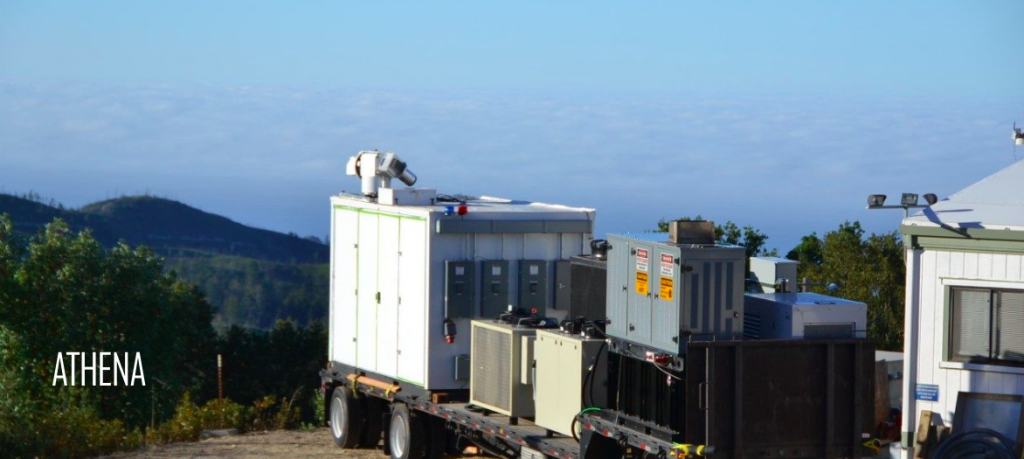

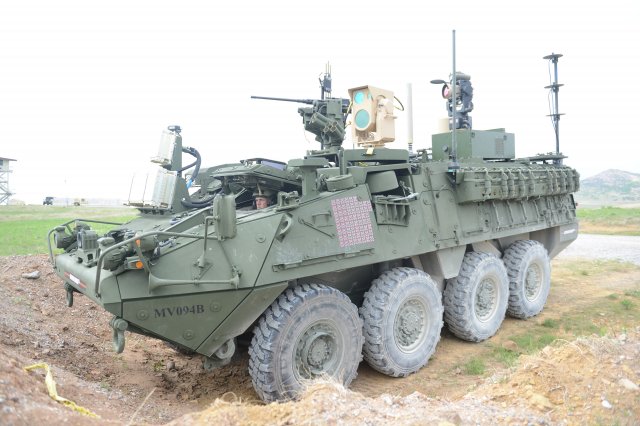
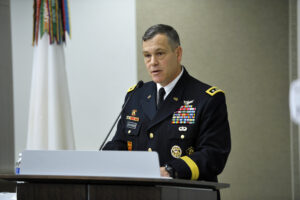
Δεν υπάρχουν σχόλια:
Δημοσίευση σχολίου